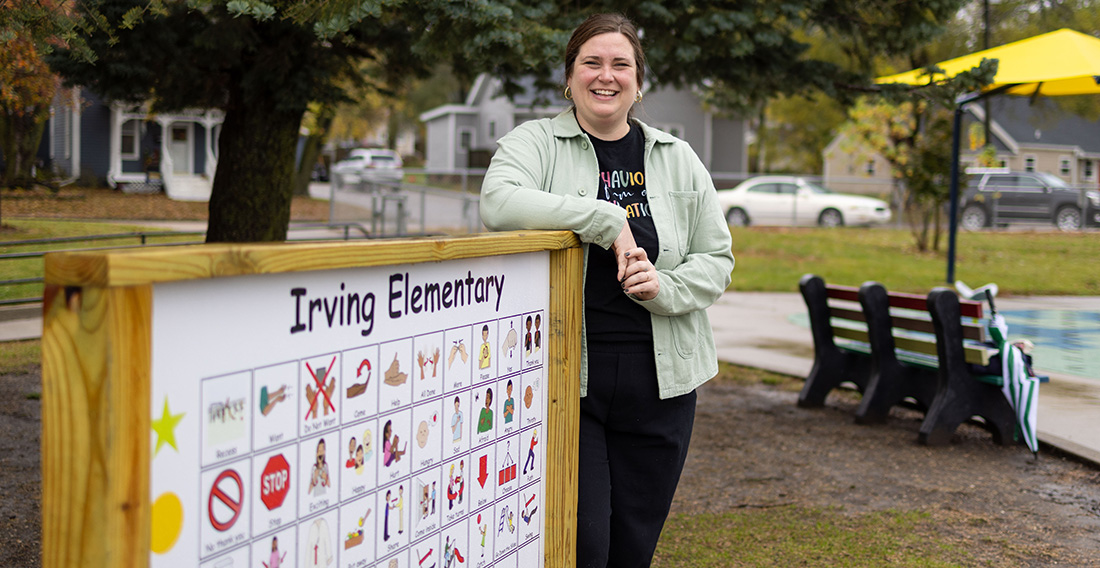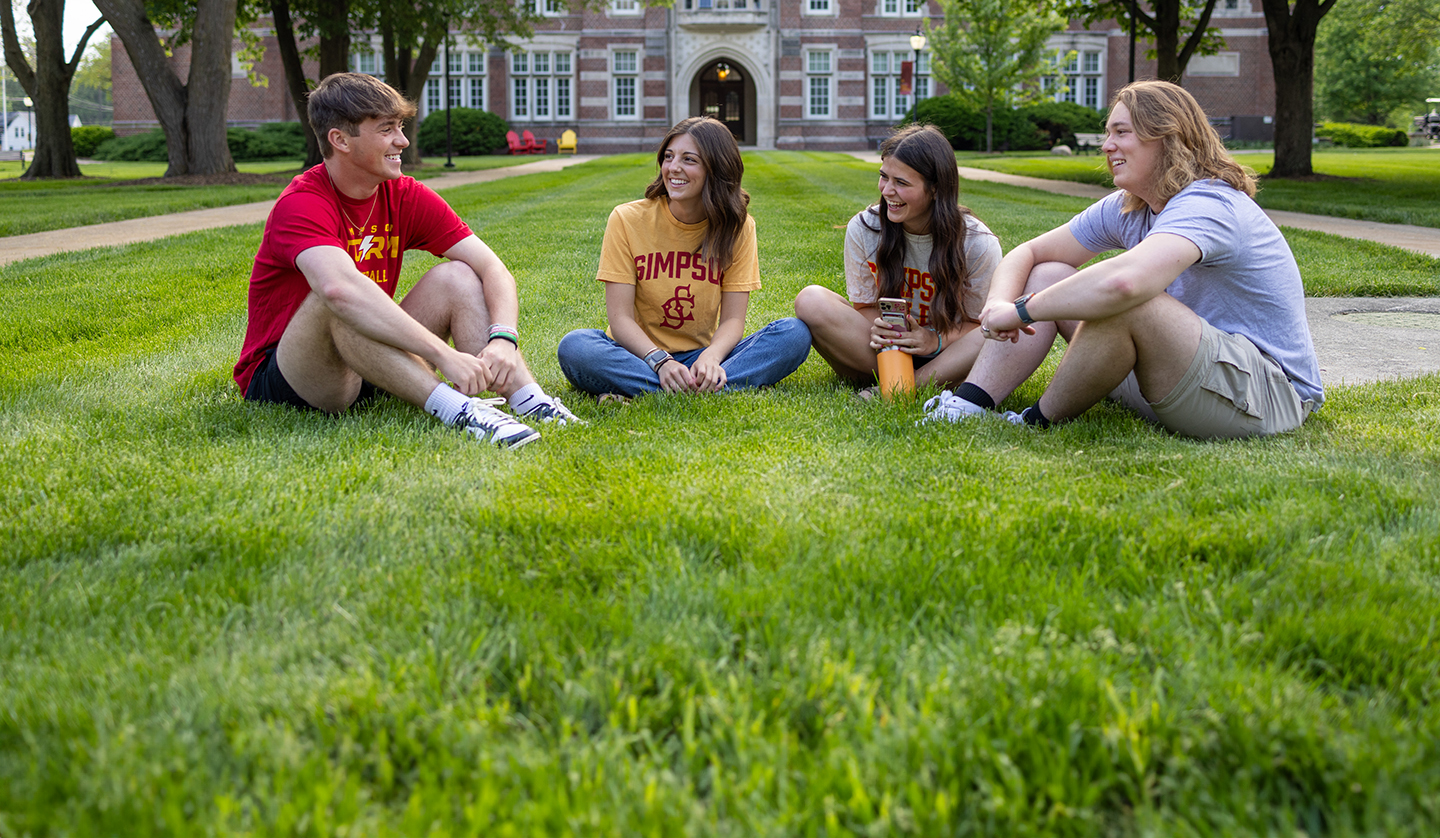Picturing Inclusion

Playground interaction can be especially difficult and frustrating for children with communication challenges. But thanks to students in Rachel Terlop’s Foundations of Inclusive Education class, those children now have a game-changing tool to overcome communication barriers and have more fun.
“We were talking in class [last fall] about different accessibility features that have popped up like fidget spinners, accessible furniture, wobble stools, that type of thing,” said Terlop. “We came across a TikTok of another town that had communication boards and the students were like, ‘Wow! That’s really neat.’”
Her students were eager to see if they could create something similar for use in the Indianola community. Leveraging access to free online learning development tools, they came up with some clever concepts.
“Our students started creating some really cool stuff,” said Terlop. “So, I thought we could actually pitch this to the local playgrounds, because it’s not something we have.”
Terlop emailed all the local elementary schools and got an enthusiastic response from John Fitzpatrick, the then principal at Emerson Elementary School in Indianola. Terlop and her students presented their final ideas to Fitzpatrick, who selected the concept created by Jenna Norris ’26.
Formally known as Augmentative and Alternative Communication (AAC) boards, the signs are intended to enhance inclusivity and accessibility for children of all abilities. As such, AAC boards facilitate non-vocal communication and promote social interaction by allowing children with Autism Spectrum Disorder (ASD) and other disabilities, as well as non-native English speakers, to express their needs, feelings and desires through visual symbols and icons.
Growing the Project
The Emerson board, funded largely through crowdsource donations, was installed late last year. Simpson then ultimately secured a $3,000 grant from the Warren County Philanthropic Partnership to grow the project beyond the Emerson prototype. By year’s end, Terlop expects 10 boards to be installed at schools and playgrounds across Indianola.
“If you want to make a difference in your community, you have to listen to what the needs are and figure out a solution,” says Terlop. “I want my students to be problem solvers. These are the types of projects and tools that allow them to see that it’s not just about the lesson, it’s also about community.”
Their project has also gone global in exciting ways. Last year, Terlop used a Simpson Creativity and Research Grant for a journey to Kenya – where she previously taught — to collaborate with professors at 10 different schools. The fundraising she did there made it possible to provide two sign boards in the Nairobi community.
This year, one of Terlop’s students is creating more boards that will be sent to Kenya. Another student is working with the Tibetan Children’s Village in India to enhance children’s literature with picture icons. There is seemingly no end to the possibilities her students can picture.
“Our students are asked to champion continual innovation, leveraging technology to build inclusive, accessible, and nondiscriminatory learning environments where every student can succeed,” said Terlop. “By working towards these standards in our program and creating opportunities to apply their technological, pedagogical, and content knowledge, we prepare them for accessible and inclusive education in the digital era.”
Article Information
Published
February 16, 2025
Author
Roger Degerman




